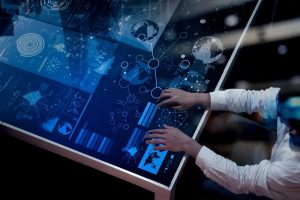Last August, at the Tesla Aida conference, Elon Musk announced the company’s plans to soon start producing humanoid robots. This statement was met with a wave of criticism and skepticism. Naked Science understands how advanced the technology of creating such robots is and what skills the new product from Tesla will be able to demonstrate, if we really see it soon.
Not so long ago, on Twitter, Elon Musk, the head of Tesla and SpaceX, announced the postponement of the date of the new Tesla AI Day conference to September 30, since by the new date the company will probably be able to present a working prototype of the humanoid robot Optimus.

The first Tesla AI Day conference was mainly devoted to Tesla’s most famous product, the driverless driving program. The Dojo supercomputer was also introduced. But the loudest news was the plans to create a humanoid robot, which was first named Tesla Bot, and then given the official name — Optimus. The decision to try yourself in robotics is not as strange as it may seem at first glance.
“Perhaps Tesla is the largest robot company in the world.
Our cars are actually semi—intelligent robots on wheels,” Musk explained at the time during his speech. — It seems reasonable to give them a humanoid form. We’re pretty good at building sensors, batteries and drives, so we think we’ll probably have a prototype next year.”
Indeed, Tesla has the knowledge and technology necessary to create the most problematic components of such robots: drives, batteries, sensors and AI “brains”.
According to Musk, at first the robot will be programmed to perform the simplest actions and will be used at Tesla’s production facilities, but over time it will be improved to eventually save people from having to perform “dangerous, repetitive, boring tasks.” The robot will be able to carry up to 20 kilograms over long distances and lift up to 68 kilograms of cargo. And it will not pose a danger to people, because people will be able to overtake it: Optimus will reach a speed of no more than eight kilometers per hour. According to Musk, the robot can even be overpowered, but he did not specify whether the restriction will be software or physical.
Does it even make sense to create anthropomorphic robots? On the one hand, all the man-made space around us was created for a person (and his forms and needs), so it will suit a humanoid robot. On the other hand, from the point of view of robotics, the human form is energy—consuming, unstable and not so effective in performing specific tasks.
Therefore, roboticists always face the question of which side to solve the task of doing the work: based on how a person performs a specific job (loads the dishwasher), or based on the final goal (washed dishes), rebuilding the environment and optimizing the robot’s actions. The second is simpler and more efficient — this is how production is being robotized now. But the humanoid form is a complex and interesting task, which is why so many companies have been developing their biped robots for decades.
The most advanced humanoid robot today is Atlas from Boston Dynamics, which has always claimed its inventions primarily as scientific and design developments, not commercial projects. The company has been working on Atlas (including its predecessor) for more than a decade, and despite impressive acrobatic tricks, the bipedal robot still often stumbles and falls. And we don’t even appreciate our human balance! And what, does Musk plan to achieve such results in a year?
Let’s compare the declared characteristics of the Tesla Optimus and Atlas. With a height of about 1.7 meters and a weight of 56 kilograms, Optimus has 40 degrees of freedom. Atlas is slightly smaller (one and a half meters), weighs significantly more (80 kilograms), has only 28 degrees of freedom and can lift about 11 kilograms. It’s hard to believe that Optimus will raise as much as six times more. However, when one of the Twitter users asked if the prototype would be similar to the illustrations and models shown, Musk replied in the negative (and this is not surprising, just look at the comparative illustration below).
